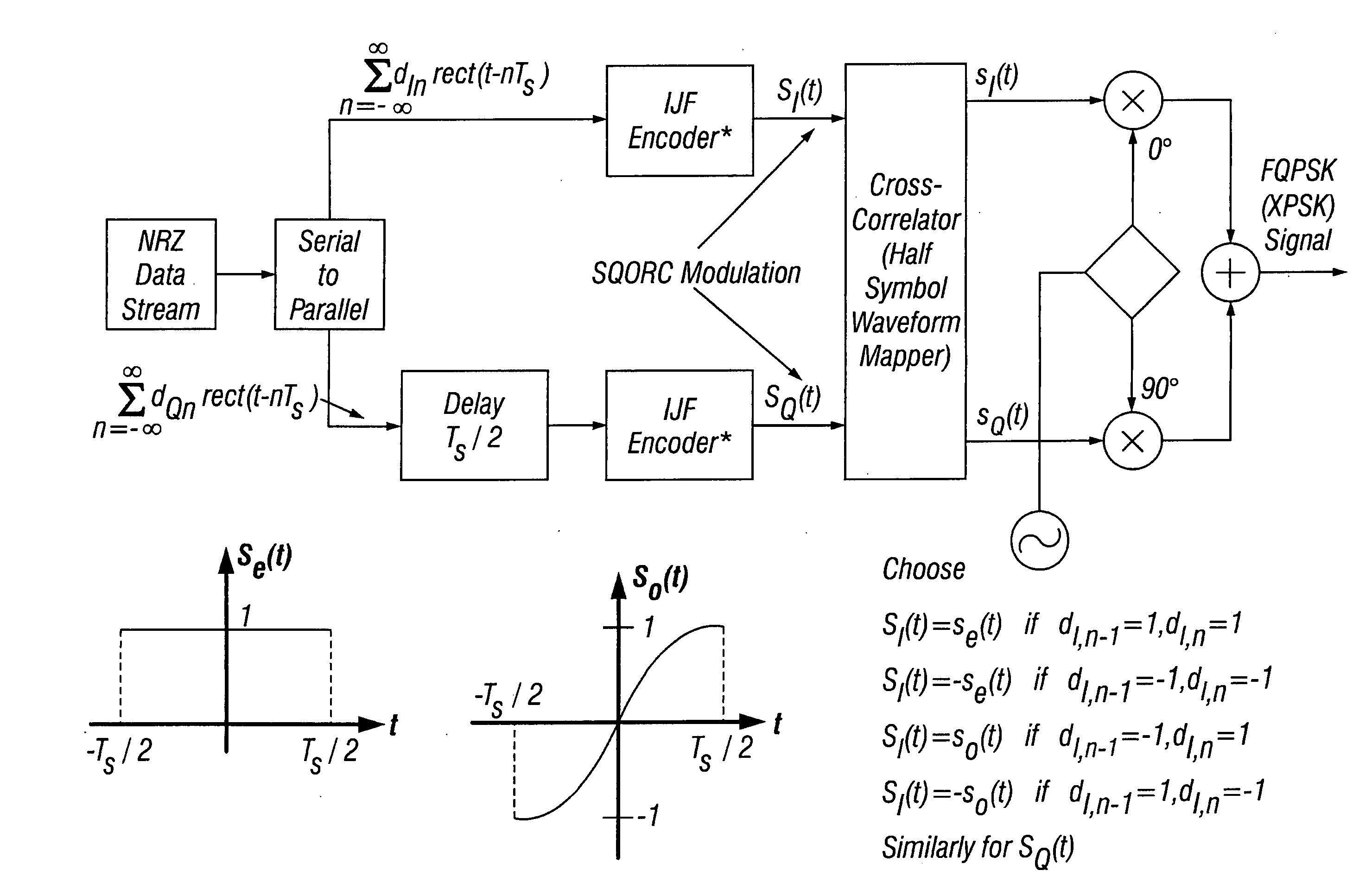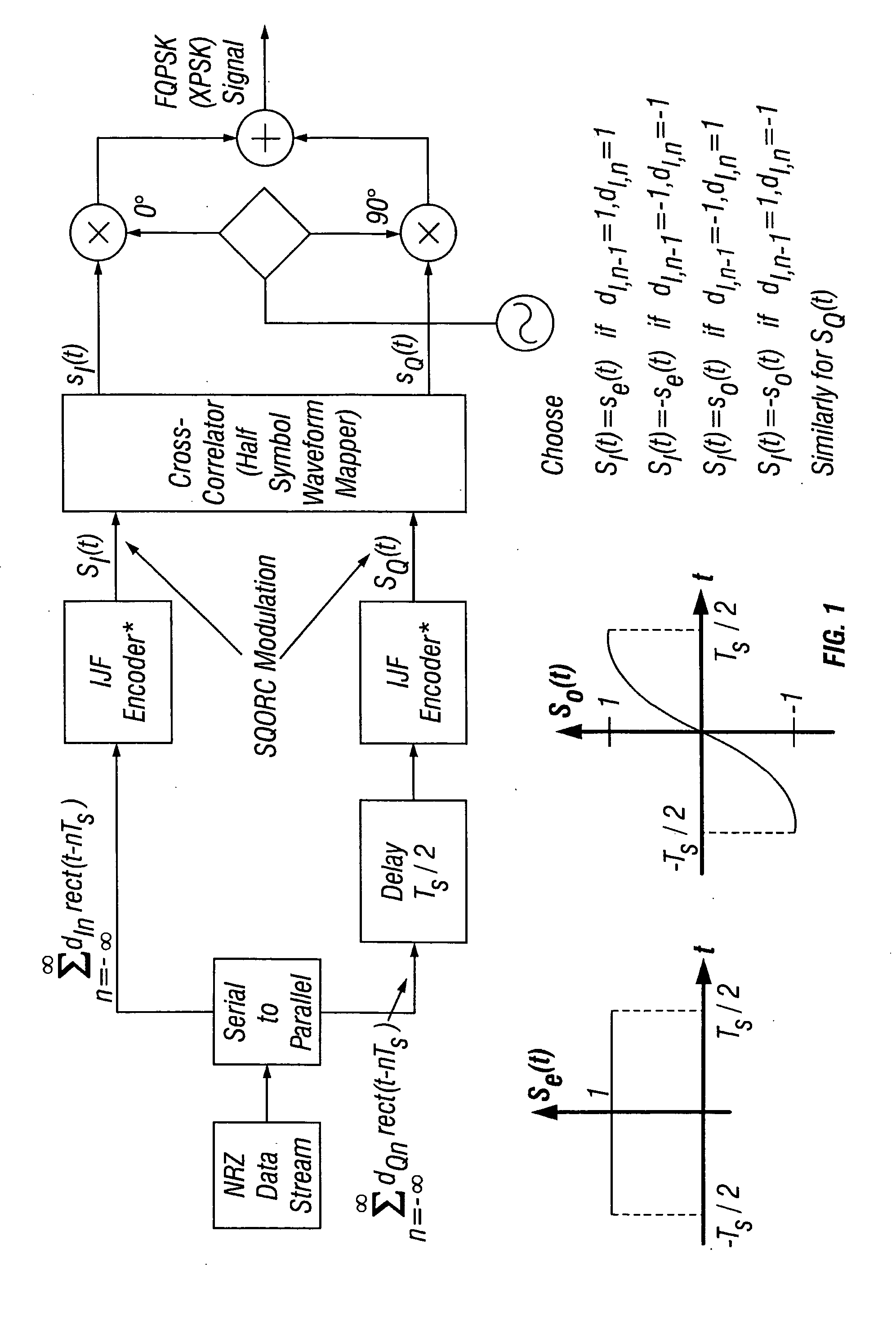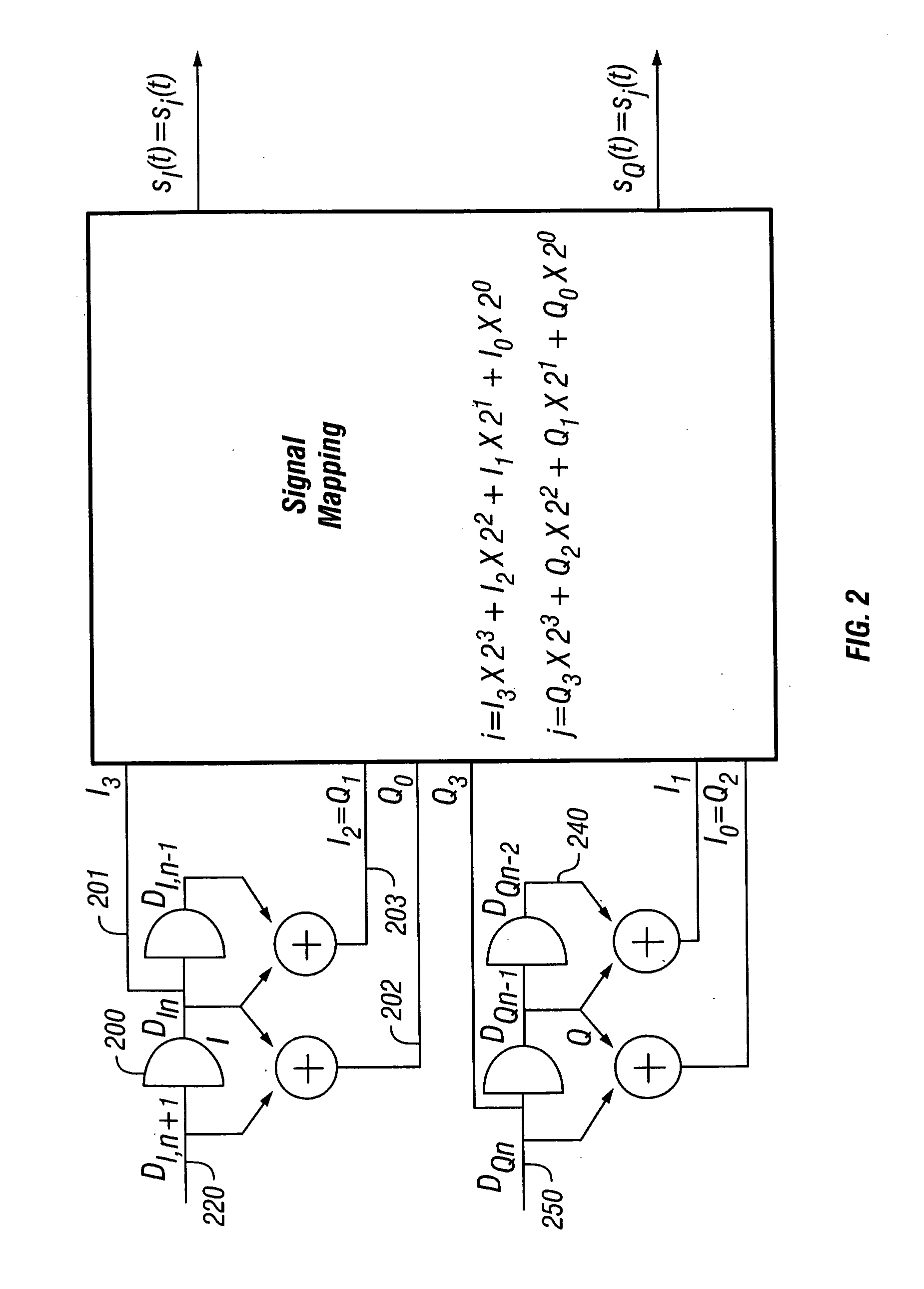Reduced complexity coding system using iterative decoding
- Summary
- Abstract
- Description
- Claims
- Application Information
AI Technical Summary
Benefits of technology
Problems solved by technology
Method used
Image
Examples
Embodiment Construction
[0023] FQPSK in its standard form is similar to many phase-shift-keying techniques which had been previously used. A conceptual diagram of FQPSK is shown in FIG. 1. One advantage of the specific FQPSK system is a 3 db envelope reduction based on intentional but controlled crosscorrelation between the I and Q channels. This was described by half symbol mappings of the 16 possible combinations of I and Q channel waveforms that were present in the signal, into a specified set of 16 waveform combinations. These 16 waveform combinations were selected in a way that rendered the crosscorrelated output time continuous. The waveform combinations also had unit, normalized, envelopes at each of the I and Q uniform sampling instants.
[0024] Since the crosscorrelation mapping was based on half symbol characterization of the signal, there was no guarantee that the slope of the crosscorrelated output waveform would be continuous at the transitions between the half symbol points. In fact, a slope d...
PUM
 Login to View More
Login to View More Abstract
Description
Claims
Application Information
 Login to View More
Login to View More - R&D
- Intellectual Property
- Life Sciences
- Materials
- Tech Scout
- Unparalleled Data Quality
- Higher Quality Content
- 60% Fewer Hallucinations
Browse by: Latest US Patents, China's latest patents, Technical Efficacy Thesaurus, Application Domain, Technology Topic, Popular Technical Reports.
© 2025 PatSnap. All rights reserved.Legal|Privacy policy|Modern Slavery Act Transparency Statement|Sitemap|About US| Contact US: help@patsnap.com



